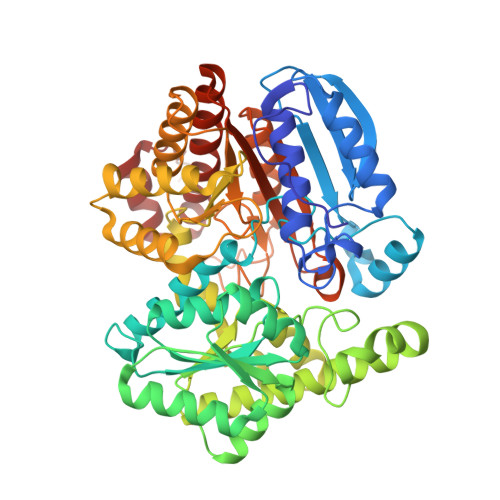In Vitro Reconstitution of a Five-Step Pathway for Bacterial Ergothioneine Catabolism.
Beliaeva, M.A., Leisinger, F., Seebeck, F.P.(2021) ACS Chem Biol 16: 397-403
- PubMed: 33544568
- DOI: https://doi.org/10.1021/acschembio.0c00968
- Primary Citation of Related Structures:
7NED - PubMed Abstract:
Ergothioneine is a histidine-derived sulfur metabolite that is biosynthesized by bacteria and fungi. Plants and animals absorb ergothioneine as a micronutrient from their environment or nutrition. Several different mechanisms of microbial ergothioneine production have been described in the past ten years. Much less is known about the genetic and structural basis for ergothioneine catabolism. In this report, we describe the in vitro reconstitution of a five-step pathway that degrades ergothioneine to l-glutamate, trimethylamine, hydrogen sulfide, carbon dioxide, and ammonia. The first two steps are catalyzed by the two enzymes ergothionase and thiourocanate hydratase. These enzymes are closely related to the first two enzymes in histidine catabolism. However, the crystal structure of thiourocanate hydratase from the firmicute Paenibacillus sp. reveals specific structural features that strictly differentiate the activity of this enzyme from that of urocanate hydratases. The final two steps are catalyzed by metal-dependent hydrolases that share most homology with the last two enzymes in uracil catabolism. The early and late part of this pathway are connected by an entirely new enzyme type that catalyzes desulfurization of a thiohydantoin intermediate. Homologous enzymes are encoded in many soil-dwelling firmicutes and proteobacteria, suggesting that bacterial activity may have a significant impact on the environmental availability of ergothioneine.
Organizational Affiliation:
Department of Chemistry, University of Basel, Mattenstrasse 24a, Basel 4002, Switzerland.

















